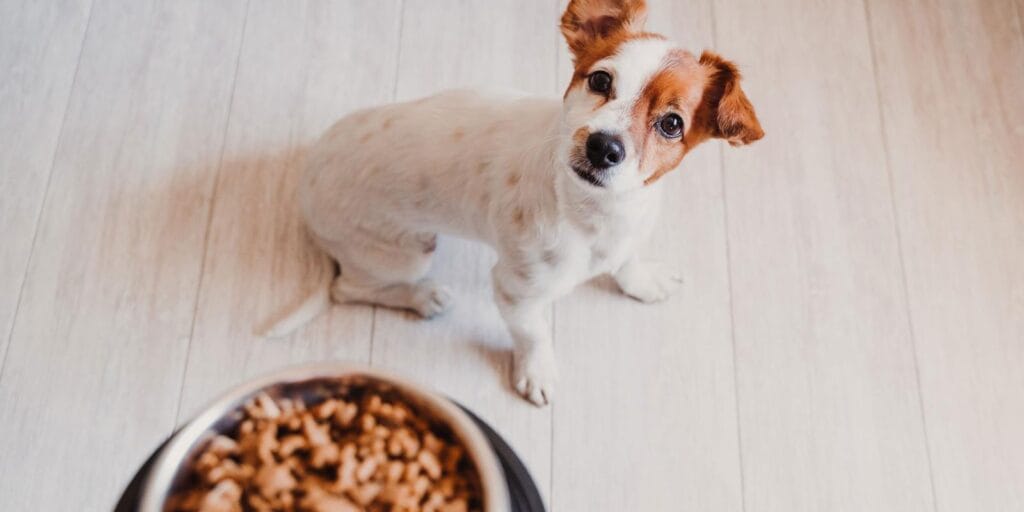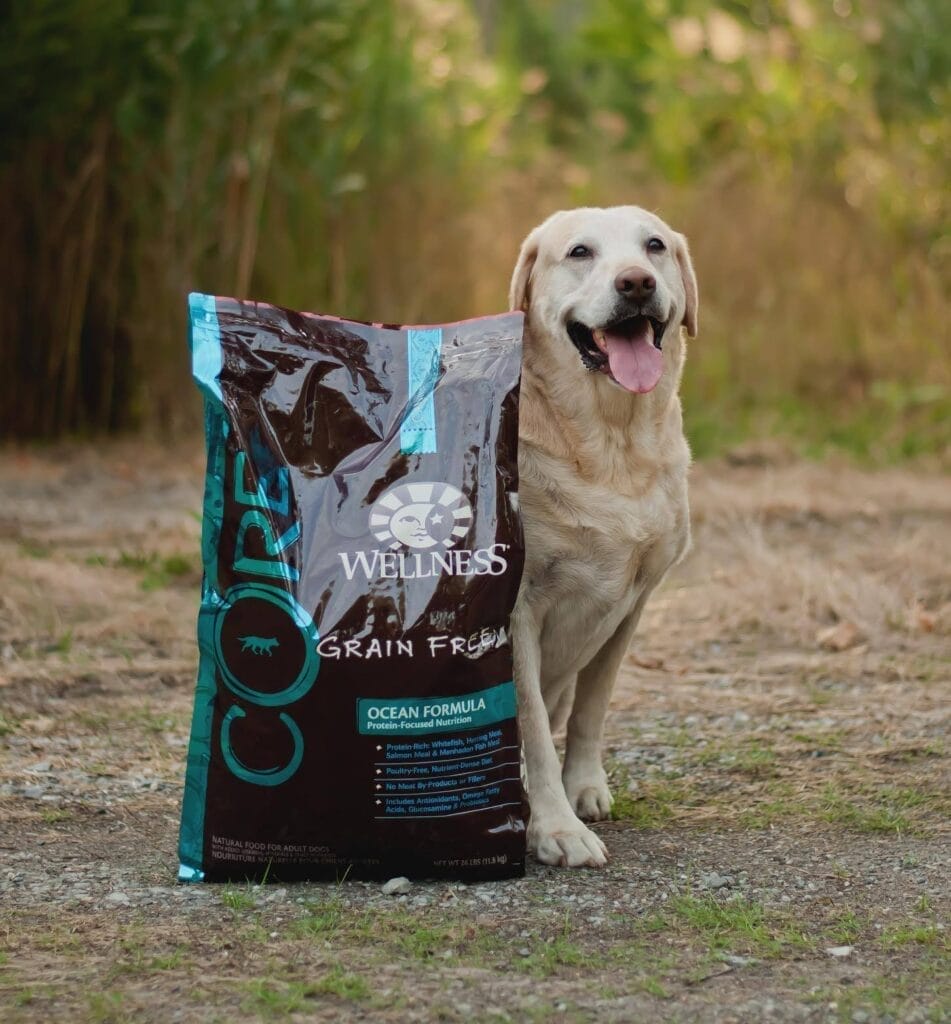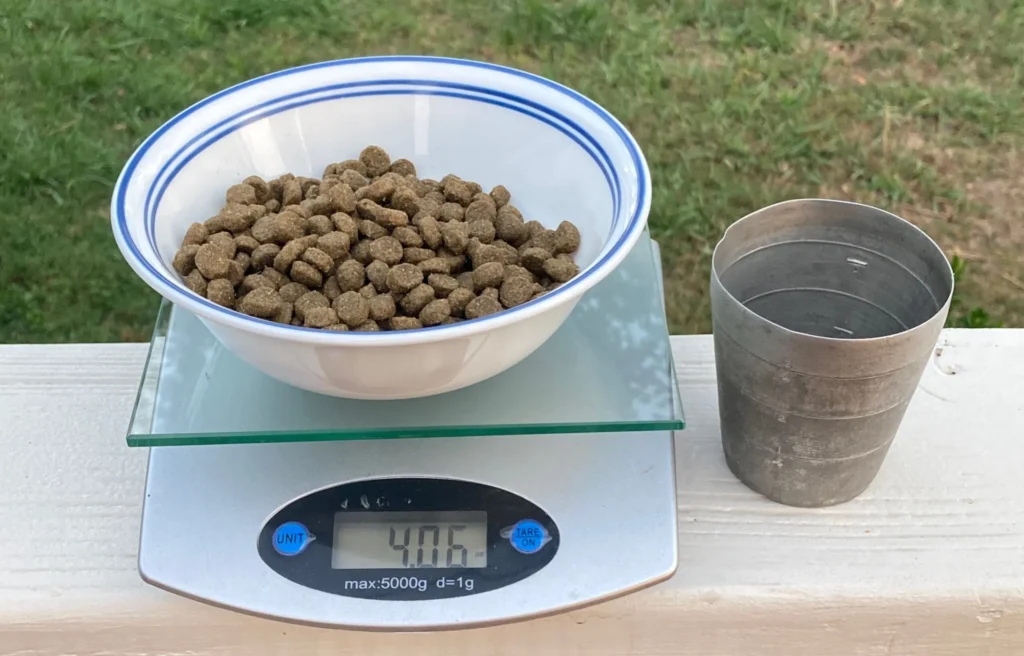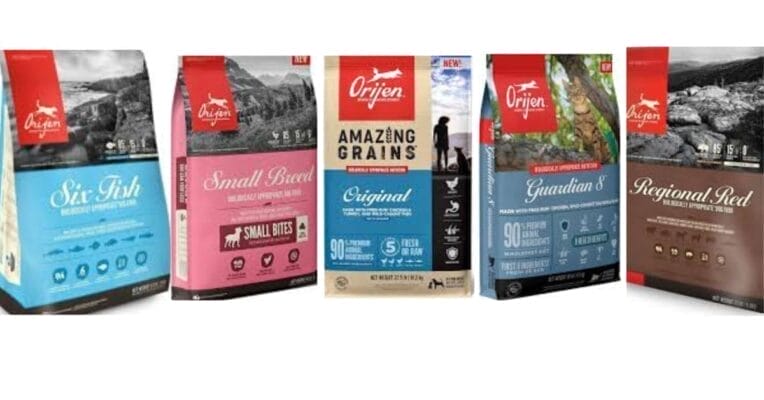How Many Cups In A Lb Of Dog Food

Welcome to our blog post where we dive into a common yet surprisingly complex question for pet owners about “How Many Cups In A Lb Of Dog Food If you’re a responsible dog owner, you know that portion control is vital to your furry friend’s health and happiness. The correct measurement of dog food ensures they receive the right amount of nutrition without overfeeding or underfeeding them. However, it’s not a one-size-fits-all answer, as several variables come into play.
In this blog , we’ll break down the factors that affect the how many cups in a Lb of dog food
Unraveling The Mystery “How many cups a Lb in a cups of dog food”
The Variables at Play
The first thing to understand is that there’s no one-size-fits-all answer. The number of cups in a pound of dog food can vary based on several key factors.
1. Type of Dog Food: Whether you’re feeding your dog dry kibble, wet canned food, or homemade meals, the volume-to-weight ratio differs. Dry kibble, for instance, is more compact, so a pound takes up less space compared to canned food.
2. Brand and Formulation: Different dog food brands have varying ingredient compositions and densities. Some brands may pack more nutrients into each pound, affecting the number of cups per pound.
3. Density: The density of dog food can significantly impact the cup-to-pound ratio. Heavier, denser kibble will occupy less space per pound compared to lighter, less dense varieties.
While the number of cups in a pound of dog food varies, here’s a rough guideline:
- Dry dog food: On average, one Lb of dry dog food is roughly equivalent to about 4 cups.
- Wet dog food: For canned or wet food, the conversion is approximately 1 Lb = 2 cups.
However, these are general estimates, and the best way to determine the exact conversion for your specific dog food is to refer to the product’s packaging or manufacturer’s guidelines. Each brand typically provides feeding recommendations based on your dog’s size and activity level.
Why Accurate Measurement Matters
Getting the portion size right is crucial to your dog’s health. Overfeeding can lead to obesity, while underfeeding can result in malnutrition. It’s essential to follow the feeding guidelines provided by your dog food brand, which are usually based on your Dog weight and age.
Dog Food Are in Different Sized Food Bags?

Dog food are in different sized Food Bags Choosing the right-sized bag of dog food is a crucial decision for pet owners. It’s not just about convenience; it also impacts your budget and ensures your furry friend gets the nutrition they need. But have you ever wondered dog food are in different-sized food bags? Let’s delve into this topic to help you make informed choices for your four-legged family member.
The Cup-to-Bag Ratio: A General Guide
Before we explore specific bag sizes, it’s essential to understand a general guideline for estimating how many cups of dog food are in a bag. On average, most dog food brands offer roughly four cups of dry kibble per pound of food. This can serve as a basic reference point when evaluating different-sized bags.
Small Bags (1-5 Pounds)
Small bags of dog food, typically ranging from 1 to 5 pounds, are convenient for small breeds, puppies, or for those who like to switch flavors frequently. Using our general guideline, you can expect to find approximately 4 cups per pound. For a 5-pound bag, that’s around 20 cups of dog food.
Medium Bags (10-20 Pounds)
Medium-sized bags of dog food, between 10 and 20 pounds, are suitable for medium-sized dogs and canines with a moderate appetite. Based on our estimate, a 15-pound bag would contain around 60 cups of dog food.
Large Bags (30+ Pounds)
Large bags are ideal for households with multiple dogs, big breeds, or pet owners who prefer to buy in bulk. A 30-pound bag, for example, should provide approximately 120 cups of dog food.
Specialty and Prescription Diets
It’s worth noting that specialty or prescription diets may vary in density and, therefore, the cup-to-bag ratio. Always refer to the product’s packaging or the manufacturer’s guidelines for precise information regarding serving sizes.
Why Its Matters ?
Budget Planning: Knowing how many cups are in a bag allows you to compare the cost per cup when choosing different bag sizes or brands.
Feeding Consistency: Consistently measuring How Many Cups In A Lb Of Dog Food helps maintain their health and prevent over- or underfeeding.
Storage and Freshness: Smaller bags are easier to store and keep food fresher for longer, while larger bags may require more storage space but may offer cost savings.

How Much Food Should You Give Your Dog?
Let’s explore the key considerations to ensure your pet’s nutritional needs are met.
1. Size and Age
The size and age of your dog play a significant role in determining their food requirements. Smaller dogs generally need less food than larger breeds, and puppies have different nutritional needs than adult or senior dogs. Be sure to consult with your veterinarian or refer to the dog food packaging for specific guidelines based on these factors.
2. Activity Level
Dogs with high energy levels and active lifestyles burn more calories and may require additional food. Working dogs, athletes, or those who participate in agility and other activities typically need a specially tailored diet. On the other hand, less active or older dogs might need fewer calories to prevent excessive weight gain.
3. Breed and Genetics
Some breeds are naturally predisposed to different nutritional needs. For instance, small breed dogs may have faster metabolisms and can benefit from smaller, more frequent meals, while certain large breeds may be prone to specific dietary sensitivities.
4. Body Condition
Your dog’s body condition should guide your feeding decisions. Ideally, you want your dog to maintain a healthy weight. If they start gaining or losing too much weight, it’s time to adjust their portion sizes. Feel free to consult your vet for advice on ideal body condition and weight management.
5. Food Type
The type of dog food you choose matters as well. Dry kibble and wet food have different caloric densities. Read the labels carefully and adjust the portion size to meet your dog’s nutritional requirements.
6. Feeding Schedule
Establishing a consistent feeding schedule helps regulate your dog’s metabolism and prevents overfeeding. Most pet owners feed their dogs twice a day, but some dogs may benefit from more frequent, smaller meals.
7. Monitor and Adjust
Lastly, pay attention to your dog’s reactions and adjust their food accordingly. If they leave food in their bowl or seem constantly hungry, it may be time to tweak the portion size. Regular visits to the vet can also help ensure your dog’s nutritional needs are being met.
What should the measurements be if you are mixing dry food with wet food?
In short, Mixing dry and wet dog food can provide a well-rounded meal with added moisture, but there is no one-size-fits-all measurement. Finding the right proportions requires consideration of your dog’s individual needs and preferences. Always consult with your vet for tailored guidance and be vigilant about your dog’s health and weight as you make dietary adjustments.
Conclusion
In short How Many Cups In A Lb Of Dog Food isn’t a one-size-fits-all answer. It depends on various factors, including the type of food, brand, and density. By understanding these variables and following the manufacturer’s recommendations, you can ensure your beloved pet gets the right amount of nutrition. Happy, healthy dogs are well-fed dogs, so let’s measure those meals with care and precision!
FAQs About How Many Cups In A Lb Of Dog Food
1. How many cups are in 1 lb of dry dog food?
Typically, there are around 4 cups of dry dog food in 1 pound.
2. How many cups of dog food are in a 10 lb bag?
In a 10-pound bag of dry dog food, you can expect approximately 40 cups.
3. How much is 1 cup of dog food?
The volume of 1 cup of dog food can vary based on the kibble’s size and density, but it’s roughly equivalent to 8 fluid ounces (about 240 milliliters).
4. Is 2 cups of dry dog food enough?
The right amount of dog food depends on your dog’s size, age, activity level, and the specific brand’s feeding guidelines. For many dogs, 2 cups per meal is suitable, but consult your vet and follow the manufacturer’s recommendations for precise portion sizes.
5. How do you measure 1 cup of dog food?
To measure 1 cup of dog food, use a standard dry measuring cup designed for this purpose. Fill it to the brim, leveling off any excess for an accurate measurement.
6. How much does a dog eat per day in KG?
The daily food intake for a dog in kilograms depends on their individual requirements, but it’s generally around 2-3% of their body weight. Consult your vet for a more precise calculation based on your dog’s specific needs.
7. How many grams is 1 cup of dog food?
The weight of 1 cup of dog food can vary depending on the brand and type, but it’s approximately 120-130 grams.
8. How many cups of dry food should I feed my dog?
The appropriate number of cups to feed your dog depends on their size, age, activity level, and the specific brand’s recommendations. Consult with your veterinarian and follow the feeding guidelines provided on the dog food packaging for accurate portion sizes.
WRITTEN BY ANAM AHMED






